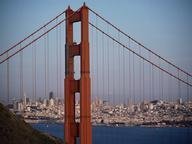Quiz Answer Key and Fun Facts
1. What was the Spanish name given to the local Native Americans who lived in what is now Los Angeles prior to the arrival of Europeans?
2. The official founding day for Los Angeles is September 4, 1781 which is the day what happened?
3. The 1846 Siege of Los Angeles during the Mexican-American War was a win for which side?
4. What role did Los Angeles play during gold rushes California experienced in the 1840s and 1850s?
5. In 1871, which group of people were targeted in a mass lynching in Los Angeles in what may be the largest mass lynching in U.S. history?
6. In 1892, oil was discovered in Los Angeles at a location where which famous landmark now stands?
7. Which building in Los Angeles was bombed on October 1, 1910 by two brothers who were iron worker union members?
8. Which film company, while not the first in Los Angeles, was Hollywood's first permanent film studio when it opened in the city in 1911?
9. Which group of people were the instigators in LA's Zoot Suit riots that occurred in June 1943?
10. Which of the following people was NOT present when Robert F. Kennedy was assassinated in LA's Ambassador Hotel in 1968?
Source: Author
Joepetz
This quiz was reviewed by FunTrivia editor
gtho4 before going online.
Any errors found in FunTrivia content are routinely corrected through our feedback system.
